Climate Change
Did you know that the ocean and the atmosphere and closely interrelated and inseparable systems? Both are being severely impacted by climate change. Specifically, both the ocean and the atmosphere are warming up, in which the ocean absorbs about 93% of the rise in temperature from 1971 to 2010.[1] let’s find out about climate change and its repercussions on the Earth’s oceans.
1. What is climate change?
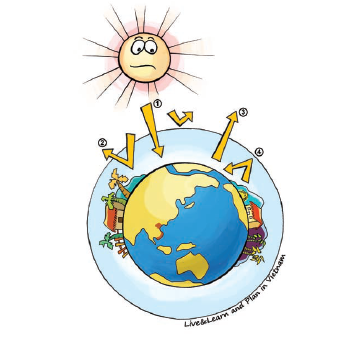
Climate change is a term that describes changes in the atmosphere that are beyond an average sustained over a longer period of time, usually a few decades or more.
Climate change is known through the rise in temperature on the Earth’s surface, which causes global warming. The main cause of climate change is the increase in greenhouse gases, especially carbon dioxide (CO2), in the atmosphere due to human activities.
2. How does climate change affect the ocean?
Rise in sea temperature
The ocean absorbs the majority of the temperature increase on Earth due to climate change. Scientists have proven that from 1971 to 2010, the seawater’s average temperature over the world has risen. It is not consistent over different areas; however this warming phenomenon is most obvious in the Northern Hemisphere, especially in the Northern Pacific Ocean.[2]
This rise in temperature causes coral bleaching, affecting the entire coral reef ecosystem. Many creatures have to change habitat to look for one with the appropriate temperature for their growth. It can also disturb the development processes of many creatures, such as hatching and incubation time.
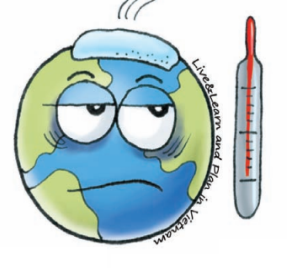
Rise in sea level
The global sea level has increased by 3.2 mm every year in the last two decades. About ⅔ of the volume increase is due to the expansion of water in the ocean, a consequence of global warming. The rest is due to the flow of freshwater from the continents, which originates from melted ice from mountains and the two Poles. [3]
The survival of coral reefs, mangrove forests, seagrass beds, and other important ecosystems depend on their ability to move to shallow water. Many slow-growing creatures will not be able to catch up with the speed at which the sea level rises. Many marine ecological landscapes, such as the sea turtles’ breeding sites, will also be lost to the rising water. Many natural barriers such as cliffs, seaside constructions, can prevent their immigration deeper into land.[4]
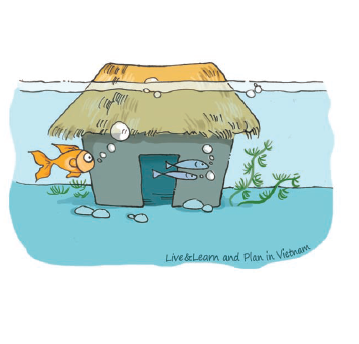
Ocean acidification
The ocean absorbs a great amount of the Earth’s carbon dioxide (CO2). When dissolved in the water, this gas can increase the ocean’s acidity. In the last 3o years, the pH level of seawater has shown a sign of derease, which means its acidity level, has risen. Scientists have calculated that if ocean acidification keeps happening at the current rate, the ocean’s pH level will be only 7.8 in 2100, much lower than the usual (approximately 8.2).[5]
The low pH level of seawater decreases the number of carbonate ions in it, causing many creatures to be unable to form skeletons and shells - directly threatening their existence. These creatures have irreplaceable roles in the ocean’s food chain; and the loss of any chain could affect the whole food chain and ecosystem.
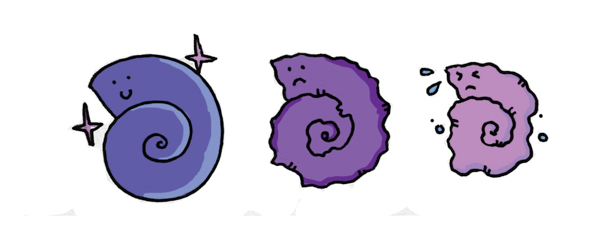
Change in the ocean’s salinity
The global ocean’s salinity has also changed. This is the result of the changes in currents of freshwater (rivers, melted ice, Polar ice,) pouring into the ocean, rain and the ocean’s evaporation ability. These factors are all affected by natural climate phenomena as well as global warming.
The change in salinity also leads to changes in the seawater’s circulation, thus once again affecting currents. The current salinity is considered to change currents and causes stratification in the seawater.[5]
Ocean stratification
The differences in salinity and temperature of different masses of seawater lead to stratification, which means separated layers of seawater are created. This rise in stratification has been recorded over the world, especially in Northern Pacific Ocean. The stratification also decreases vertical circulation in the ocean, as well as oxygen level and nutrition at the surface level. It also changed the ocean’s ability to absorb heat and CO2, since less cool water is moved from the bottom to the surface, while the surface is the layer that absorbs the most heat and CO2.[7]
Change the current system
Similarly to stratification, climate change also causes seawater masses to have large differences in salinity and temperature, leading to a change in the current system.
Many creatures that rely on sea currents to reproduce and search for food will be affected, such a corals and coral reef fish that build coral reefs based on the dissemination of their larvea along the currents. Along with the changes in currents, many immigration models of marine creatures will also be changed.
Storms and other forms of extreme weather
The rise in the ocean’s temperature will create more energy to fuel sea storms. Scientists believe that this situation will decrease typhoons’ frequency of occurence, however it will increase their amplitude and destructiveness.[8] Storms and typhoons greatly affect seaside areas, where there are dense human populations.
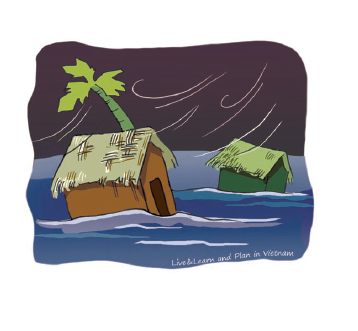
Decrease in dissolved oxygen in seawater
The amount of dissolved oxygen in the ocean in tropical areas has decreased, mainly due to the warming in oceans in the last 50 years. The warming seawater and stratification are believed to decrease the amount of oxygen from the atmosphere that gets dissolved into seawater, as well as the circulation of oxygen between ocean layers.
In Vietnam
According to climate change scenarios in Vietnam and the region, the average sea level in the coast of Vietnam will rise to 40 cm by 2050 and is estimated to rise to 100cm by 2100. Climate change and rising sea level can exacerbate droughts and saline intrusion during dry season, increase flooded areas and difficulty in drainage during rainy season. It also leads to coastal erosion and salinization of water resources, affecting agricultural production and drinking water, posing a risk to coastal constructions such as dams, roads, ports, factories, urban areas, and coastal communities [9]
3. What can we do?
Climate change seems like an enormous and alien concept, but in reality each of us has the ability to contribute to mitigating it, adapting to it and its effects on the ocean.
Mitigation of climate change is preventing global warming by decreasing the amount and frequency of greenhouse gases emission. Cutting down on CO2 in our daily activities is the most practical and simple action that we can immediately carry out! For example, we can opt for energy saving devices, use wind and solar energy, plant mangrove forests,
Adapting to climate change consists of moderations in human activities to adapt to and increase our resistance against consequences of climate change, and at the same time exploiting its advantages. Examples are: teach women and children how to swim, participate in sea turtles conservation programs,...

